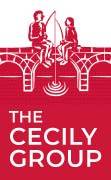
Family enterprises possess a broad range of resources that go beyond financial capital. These resources encompass intangible assets such as the education of family members, networks of influence, and deeply ingrained family values. The Resource-Based View (RBV) provides a strategic framework that helps family enterprises assess and leverage these resources to create a lasting competitive advantage.
What Are Resources?
The Resource-Based View (RBV), rooted in strategic management theory, emphasises a company’s internal resources and capabilities as the foundation for its strategic advantage. According to this framework, resources are valuable when they are rare, inimitable, and non-substitutable. In this context, resources that competitors cannot easily replicate or replace become powerful tools for sustaining a competitive edge.
As Hooley, Broderick, and Möller explain, “the resource-based view focuses on the internal resources of the firm as the key to gaining competitive advantage, as opposed to strategies that focus primarily on market positioning” (Hooley, Broderick, and Möller, 1998, p. 100). These internal resources may include physical assets, intellectual property, or intangible assets like family reputation and values.
In a family enterprise, these resources may be both tangible—such as real estate or business assets—and intangible, including:
- Family reputation and long-standing relationships with partners
- Education and expertise of family members
- Long-term orientation driven by the family’s desire to preserve wealth across generations
The RBV framework assists family enterprises in identifying their strengths and weaknesses, allowing them to make informed strategic decisions to protect and grow their competitive advantages.
Resource Heterogeneity and Competitive Advantage
A core concept of the RBV is resource heterogeneity, which suggests that no two firms possess the same resources or capabilities. This diversity is particularly true for family enterprises, which often benefit from unique family dynamics, such as trust, loyalty, and a long-term approach to decision-making. These intangible assets, while difficult to quantify, can provide a significant competitive advantage when leveraged correctly.
As Hooley, Broderick, and Möller note, “resources that are unique, difficult to imitate, and valuable to customers can lead to a sustained competitive advantage” (1998, p. 102). In family enterprises, this uniqueness often arises from factors such as a shared family identity, a deep understanding of the business’s values, and a commitment to legacy.
Dynamic Capabilities and Flexibility
While a family enterprise may have valuable resources, these alone are not enough to ensure long-term success. It is crucial to develop dynamic capabilities—the ability to adapt and reconfigure resources in response to changing market conditions.
For instance, family enterprises often benefit from a long-term focus, enabling them to make strategic decisions that prioritise future success over short-term gains. However, without the ability to pivot when necessary, even well-established enterprises can fall behind. Developing dynamic capabilities, such as improving governance structures or ensuring smooth leadership transitions through comprehensive succession planning, allows family enterprises to remain competitive in the face of market volatility.
Applying the Resource-Based View to Family Enterprises
The RBV framework can be especially beneficial for family enterprises because it recognises that these businesses often have unique resources not easily available to non-family firms. Here are some key ways the RBV can be applied to family enterprises:
- Family Culture and Values: A strong family culture instils a sense of loyalty and commitment in both family members and employees, creating a distinct advantage. The RBV recognises this as an invaluable resource, particularly because it is difficult for competitors to replicate.
- Long-Term Orientation: Family enterprises often emphasise long-term wealth preservation, allowing them to make strategic decisions that might not deliver immediate returns but are critical for sustained success.
- Trust and Loyalty: Trust among family members is an intangible asset that supports strong decision-making processes and reduces internal friction. This sense of loyalty also extends to employees, who often feel a deeper connection to family-led businesses.
As Hooley, Broderick, and Möller discuss, “firms must develop capabilities that allow them to continuously adapt their resource base to meet environmental changes and sustain their competitive advantage” (1998, p. 104). For family enterprises, this means not only leveraging existing resources but also developing the capacity to reconfigure and redeploy these resources as needed.
Overcoming Challenges: Building Dynamic Capabilities
Family enterprises face unique challenges, including the potential for family conflicts and a lack of clear governance structures. To mitigate these risks and maximise the advantages of their resources, family enterprises should focus on building dynamic capabilities. This includes:
- Establishing Governance Structures: A clear family governance system can support decision-making, align family goals with business objectives, and reduce the risk of conflict. A well-defined family constitution or charter helps formalise these structures.
- Investing in Succession Planning: Effective succession planning ensures that future generations are prepared to take on leadership roles, safeguarding the long-term sustainability of the business. This involves not only financial planning but also ensuring the next generation is equipped with the skills and experience needed for success.
Conclusion
The Resource-Based View (RBV) offers a valuable framework for family enterprises looking to strategically manage their unique resources and capabilities. By recognising the value of both tangible and intangible assets, such as family culture, trust, and long-term orientation, family enterprises can build and sustain competitive advantages that are difficult for competitors to replicate.
However, to ensure long-term success, family enterprises must also invest in developing dynamic capabilities. These capabilities allow them to reconfigure their resources in response to market changes and family dynamics, ensuring that they remain competitive across generations.
As Hooley, Broderick, and Möller suggest, “long-term survival depends not just on acquiring valuable resources, but also on the ability to adapt and renew these resources in response to changes” (1998, p. 106). Family enterprises that embrace this mindset will be well-positioned to thrive across generations, ensuring both business success and the preservation of family legacy.
FAQs
What is the Resource-Based View (RBV) in the context of family enterprises?
The Resource-Based View (RBV) is a strategic framework that focuses on a company’s internal resources and capabilities as the foundation for its competitive advantage. For family enterprises, this means leveraging unique resources like family culture, long-term focus, and strong trust among family members to gain and maintain a competitive edge.
How do family enterprises benefit from the Resource-Based View?
Family enterprises benefit from the RBV by identifying and maximising their unique resources—both tangible (e.g., business assets) and intangible (e.g., family values, reputation). By leveraging these rare, inimitable, and non-substitutable resources, family enterprises can achieve sustained competitive advantage over competitors.
What are examples of intangible resources in family enterprises?
Intangible resources include the family’s reputation, networks of influence, strong family culture, long-term business orientation, and trust among family members. These assets, though difficult to quantify, can play a crucial role in creating a lasting competitive advantage for family enterprises.
How does the Resource-Based View (RBV) support succession planning?
The RBV emphasises leveraging internal resources, which includes planning for leadership transitions. A robust succession plan ensures that future generations are prepared to manage the enterprise and uphold the family’s legacy. Dynamic capabilities help in transferring knowledge, instilling values, and preparing successors for the responsibilities ahead.
How can a family enterprise start leveraging its resources based on the RBV framework?
To start leveraging the RBV framework, a family enterprise should map out its resources, including tangible and intangible assets. This involves identifying what makes the family enterprise unique, such as long-term relationships, family culture, or proprietary knowledge, and aligning these resources with a strategic vision for sustained competitive advantage.
Reference
Hooley, G., Broderick, A., and Möller, K., 1998. Competitive positioning and the resource-based view of the firm. Journal of Strategic Marketing, 6(2), pp. 97-116. Available at: https://doi.org/10.1080/09652549800000003.
